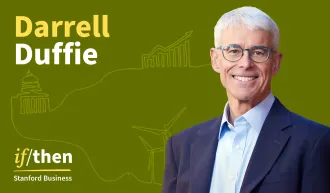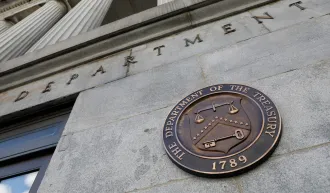The Power of a Free Popsicle
A new book shows the value of memorable defining moments on customer and employee experiences.
February 19, 2018

Want your company to stand out? Create memorable moments for your customers. | iStock/etorres69
Los Angeles boasts plenty of terrific hotels. At this writing, the top three on Tripadvisor are the Beverly Hills Hotel, Hotel Bel-Air, and the Peninsula Beverly Hills. If you can get a room at any of them for under $700 per night, Tripadvisor says you’re getting a “great value.”
The fourth name on the list is the Magic Castle Hotel. You can snag a room there for $199, but Tripadvisor doesn’t call that out as a great rate. The Magic Castle Hotel, as Chip Heath, the Thrive Foundation for Youth Professor of Organizational Behavior at Stanford Graduate School of Business, describes it, “is actually a converted two-story apartment complex from the 1950s, painted canary yellow … [with] a pool that might qualify as Olympic size, if the Olympics were being held in your backyard.”
How does the Magic Castle Hotel maintain such an enviable Tripadvisor ranking among the 355 hostelries it lists in LA? In their new book, The Power of Moments, Heath and his brother, Dan Heath, a senior fellow at Duke University’s CASE Center, trace it to the hotel’s ability to create “defining moments.” These moments, they say, are ones that bring meaning to our lives and provide fond memories.
One of those defining moments is the Popsicle Hotline. Visitors at the hotel’s pool can pick up a red phone on a poolside wall to hear, “Hello, Popsicle Hotline.” They request an ice-pop in their favorite flavor, and a few minutes later, an employee wearing white gloves delivers it on a silver platter, no charge. It’s a small defining moment that doesn’t cost much to produce, but has paid off for the Magic Castle Hotel.
In The Power of Moments, the Heath brothers identify four metatypical defining moments. Elevation moments transcend ordinary experience, like the arrival of an ice-pop on a silver platter. Insight moments rewire our understanding of the world, like George de Mestral pulling burrs from his clothes after a hike and getting the idea for a new kind of fastener that he named Velcro. Moments of pride accompany achievement, which is why employee recognition is such a powerful tool. And moments of connection — like weddings, graduations, and retirements — strengthen relationships.
Transitions, Peaks, and Pits
The problem with defining moments is that leaders and organizations often don’t recognize them and thus miss the opportunities they harbor. To solve that problem, Heath says, companies should start “thinking in moments” by looking for the transitions, peaks, and pits in their customer and employee experiences.
Transitions are the most undervalued and underexplored moments. “Most companies don’t have a great first-day experience planned for their new employees, even though that’s a really key transition,” Heath says. “When a customer calls her insurer because she’s had a kid and bought an SUV, there’s an opportunity to create a moment of connection. And what if a homeowner paid off his mortgage and a bank manager came to his home to present the deed and shake his hand, instead of charging an additional fee for the deed transfer? Nobody’s doing that.”
Peaks are obvious opportunities for creating defining moments, but often companies don’t take full advantage of them. “Retirement dinners are typically about elevation — there’s a special dinner — and connection, by bringing together people that the retiree has worked with over the years,” explains Heath. “But none of the ones I’ve been to include giving retirees a chance to hold the floor and talk about insights they’ve gained over the years. It seems so obvious. Why wouldn’t we add insight to that moment? And why wouldn’t we add pride to that moment by celebrating all the projects that we’ve worked on with this person and the progress that we’ve made?”
Pits — like negative performance reviews and corporate downturns — are less obvious opportunities to create defining moments. But, Heath says, “A moment of pain can be a tremendously important human experience. There are a range of negative emotions in customer experiences and employee experiences that nobody’s really tackling.” Pits also can be invaluable sources of insight. When Sara Blakely was growing up, her father asked the same question of her and her brothers once a week, “What did you guys fail at this week?” It normalized failure for Blakely and taught her not to fear it. That insight paid off in spades when money men who just didn’t get her idea for footless pantyhose rejected it over and over. Twelve years later, Spanx made Blakely the youngest self-made female billionaire in history.
Attention to (One) Detail
One of Heath’s goals in writing The Power of Moments is to expand our understanding of experiences. “The whole literature on customer experience and employee experience is essentially focused around delight,” he says. “There’s a lot of journey mapping of the entire customer experience aimed at identifying low points and trying to buck them up.”
But you don’t need to perfect every moment in the customer’s experience.
“Jan Carlzon [former CEO of Scandinavian Airlines] coined the phrase ‘moments of truth’ and talked about getting right the thousands of touchpoints with customers that happen daily,” continues Heath. “I don’t think you have to fix thousands of touchpoints. Maybe you want to have one defining moment at the gate and one moment at the luggage reclaim area. Maybe you want to invest in an entertaining flight safety video that people actually enjoy watching, like Virgin America.”
In other words, Heath thinks companies should think a bit more like the Magic Castle Hotel. “Magic Castle isn’t worried about changing the awful yellow color of the building or upgrading the bathrooms. Its managers are thinking about doing a couple of things during a stay that will really stand out in guests’ minds,” he says. “I think that’s an advantage, because then you don’t have to excel at everything. You only have to excel at a few things that are going to be memorable. Those defining moments can become powerful signature moments.”
For media inquiries, visit the Newsroom.
Explore More

How to Get Beyond Talk of “Culture Change” and Make It Happen

Conflict Among Hospital Staff Could Compromise Care



